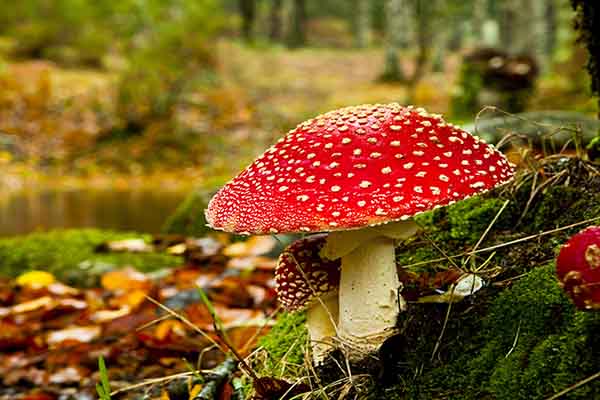Last updated: April 5, 2018
Lesson Plan
Biodiversity Curriculum: Middle School Newsletter

- Grade Level:
- Middle School: Sixth Grade through Eighth Grade
- Subject:
- Science
- Lesson Duration:
- 60 Minutes
- Common Core Standards:
- 6-8.RST.1, 6-8.RST.7, 6-8.WHST.1, 6-8.WHST.9
- Additional Standards:
- MS-LS2-1
MS-LS2-4
Objective
Students are given the opportunity to research a topic of their choice related to threats that exist to the biodiversity of our planet.
Background
“Almost all current biodiversity analysts agree that the extinction of species is
proceeding at one hundred to 10,000 times the pre-human rate, while the rate of origin
of new species is decreasing.” (“Biologist” 2001)
The threats to biodiversity on Earth cannot be ignored without consequences. Threats
to biodiversity can be explored at three different levels: (1) ecosystem diversity refers to
the diversity of habitats: an ecosystem is a community of living organisms and nonliving
components living and interacting together; (2) species diversity refers to the many
different species of organisms in the world; currently scientists have classified 1.5
million species (Giller, 2014); (3) genetic diversity refers to the different forms of genetic
information carried within a particular species to keep maintain viability. There are
threats to biodiversity at all levels including habitat destruction, invasive species,
pollution, hunting, and climate change. (Miller, 2010).
Preparation
30-60 minutes to read through activity, collect materials, and print Worksheet
Materials
Download Attachment 1: Careers related to biodiversity
Download Worksheet 1: Threats to the biodiversity of our planet
Lesson Hook/Preview
Students are given the opportunity to research a topic of their choice related to threats that exist to the biodiversity of our planet. Biodiversity refers to the variety of living organisms, as well as ecosystem diversity, species’ genetic diversity, and frequency of occurrence. The quality of human life is directly related to the quality of life for all organisms. Preserving biodiversity is key to our well-being. Government agencies such as the National Park Service are concerned with conservation of habitats that are necessary to protect different organisms. Visit their Biodiversity subject site to learn more. In this activity students will explore a threat to biodiversity in depth.
Procedure
Focus Questions:
What are different threats to biodiversity in the world?
What is being done to conserve or restore biodiversity to natural areas?
Where are the loss of biodiversity hotspots in the world?
Learning Target:
I can describe a threat to biodiversity and explain how humans are trying
to minimize the impact.
Engagement:
(10-15 minutes)
Instructor will find recent science-related articles from newspapers, magazines, or using
online resources. The instruct will want to find articles that are not too long so that they
can be projected or read to the class. After reading the article, the instructor will ask
students to explain what are the 5 W’s (who, what, when, where, and why) in the article.
Investigation:
(2-3 class periods)
1. Students will create a biodiversity newsletter focusing on the essential question of
“What threats exist to the biodiversity of our planet?” Instructor will hand out the
Worksheet 1--Biodiversity Newsletter” to use as an outline. Included on the worksheet
are boxes for students to take notes and help organize their thoughts and research on
their particular topic. Students will need to pick a biodiversity threat to research and
record vocabulary words that are unfamiliar to them. Further research will fill in the
“who, what, when, where, and why” of the topic they are researching.
2. After research is completed, students will write an article for the newsletter to share
the information that they have gathered about their topic. Students should have a
finished typed version ready to copy and paste into a newsletter format.
Explanation:
(15-20 minutes)
To compile into a newsletter, articles can be grouped by topic or the newsletter can be
devoted to just one topic (for example: habitat destruction). An alternative is to have
groups of students compile their articles together. Microsoft Word has many templates
for newsletters. Students will need to copy and paste their articles into a template and
insert a title for their article.
Extension:
(30-45 minutes)
It takes a diverse group of community members and professionals to make a difference
in protecting Earth’s biodiversity. Attachment 1: Biodiversity Newsletter, provides a list
of careers to research (the instructor may be able to suggest many more). Students will
pick a career that they would be interested in pursuing and create a “driver’s license” of
themselves with information about their career choice. Students could use the actual
license of their state or a generic Science Driver’s License. The instructor should
encourage student
Vocabulary
biodiversity, ecosystem, organism
Additional Resources
"Biologist Edward O. Wilson—The Bard of Biodiversity." Discover Magazine. Ed. Josie
Glausiusz. Kalmbach Publishing Company, 1 Dec. 2001. Web. 26 Aug. 2014.
<http://discovermagazine.com/2001/dec/breakdialogue>
Giller, Geoffrey. "Are We Any Closer to Knowing How Many Species There Are on
Earth?" Scientific American Global RSS. Scientific American, 8 Apr. 2014. Web. 16 Aug.
2014. <http://www.scientificamerican.com/article/are-we-any-closer-to-knowing-howmany- species-there-are-on-earth>
Miller, Kenneth R., and Joseph S. Levine. Biology--Miller & Levine. Boston, MA:
Pearson, 2010. Print.
Tschakert, Petra. "Threats to Biodiversity." Welcome! Pennsylvania State University, 1
Jan. 2014. Web. 23 Aug. 2014. <https://www.e-education.psu.edu/geog030/node/394>
Featured Photo: Courtesy of National Geographic.
